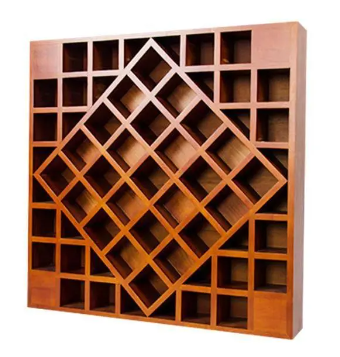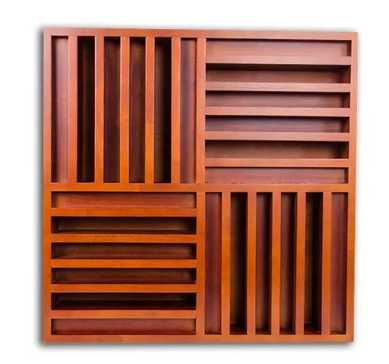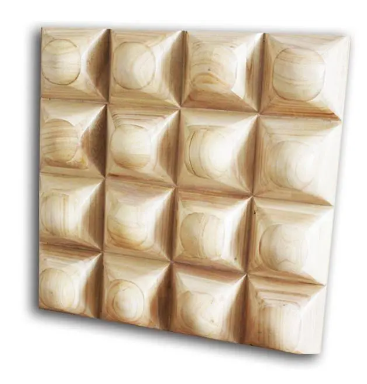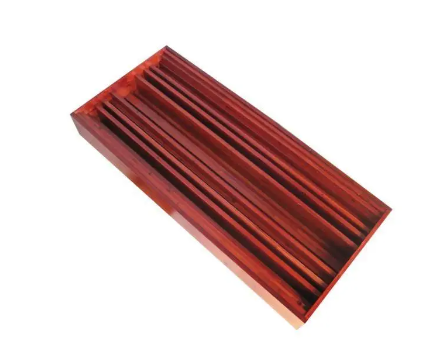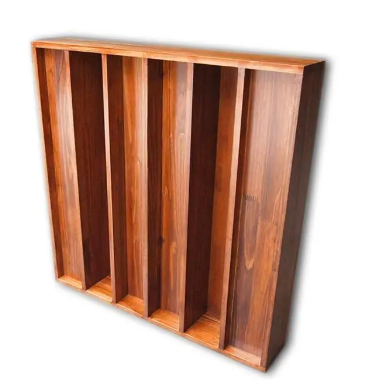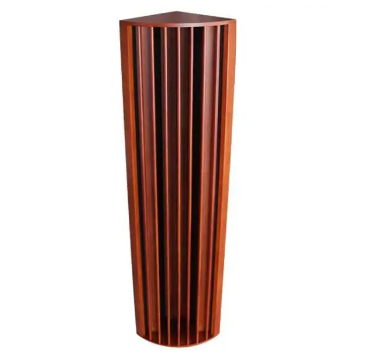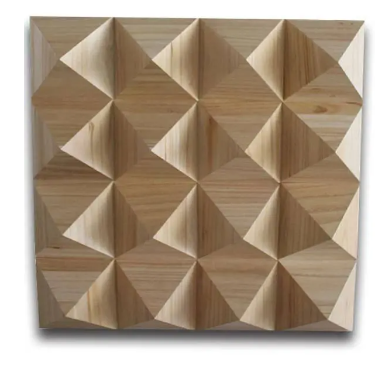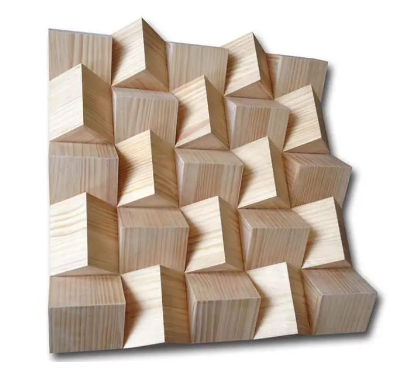Diffusor wall panel KDF-02
Send InquireProduct Details
By reading through our site, you are no doubt somewhat familiar with the concept of acoustical absorption. Sound striking an absorber – like our Polyester acoustic panel – gets absorbs much like water hitting a sponge gets soaked up. Rooms treated with absorption tend to be described as acoustically ”dead” or ”neutral.”
Diffusion on the other hand ”scatters” or ”shatters”; sound. The most basic analogy might be water hitting the underside of a cupcake pan. The water is scattered in many different directions. Sound hitting a diffusor is reflected, but controlled such that a certain range of frequencies will be scattered randomly in all directions.
There are different types of diffusors. I generally classify into two (2) broad categories:
A. Scientific Diffusion. For example Quadratic Residue Diffusors or Primative Root Diffusors. These are diffusors that are designed with a specific number sequence in mind. The father of modern diffusion is Manfred Schroeder. His equations and number series for diffusion are the most widely applied. Scientific diffusors come in many shapes and sizes. They can be 2 or 3 dimensional. 2D diffusors scatter sound horizontally or vertically. A 3D diffusor both horizontally and vertically. The efficiency of diffusion is not as easy to quantify as absorption is. Absorption has been calculated since the early 1900s using methods developed by Wallace Sabine. It is a very well-known method that results in absorption coefficients and NRCs – numbers that generally vary between 0.0 and 1.0 (but could go higher than 1.0) with the higher rating signifying a better absorber.
The Audio Engineering Society has recently developed a similar rating for diffusion. It is a standard that quantifies the performance of a diffusor using a 0.0 to 1.0 rating like absorption – the higher the ”diffusion coefficient,” the better the diffusor. Not all diffusors have been tested in accordance with this new standard.Diffusor panel have and perform very well. (Numbers are available upon request.)
B. Controlled Reflection. Some would argue that this is not a form of diffusion at all. ”Barrel” diffusors, pyramidal diffusors, Hemi-cylindrical diffusors fall into this category. Basically, the science behind these redirectors of sound is that they minimize parallel surfaces and therefore increase the diffusiveness of sound in the room.
Diffusion is most effective in larger rooms. A minimum requirement is that the longest dimension in the room is at least 12′.
If you feel ”oppressed” in rooms that have been heavily treated with absorption, you might be a candidate for diffusion – control without the ”deadness” of absorbers.
Live Rooms, particularly where drums or ensembles (such as choirs or orchestras) are being recorded, are great candidates for diffusion.
The ceiling of a Control Room may benefit from diffusion (provided the height is greater than about 8 or 9 feet). This is particularly applicable if you are mixing a lot of acoustic instruments, ensemble music, jazz, etc. (I.e., a MIDI studio probably wouldn’t benefit as much.)
Good diffusion can get expensive. If you are on a tight budget, you might be better off with all absorptive materials, or a mix of absorption and Diffusor, or even a mix of absorption and ”natural” diffusion – bookcases, wall fixtures, etc.
Want more than just acoustic enhancement to your studio?
The Diffusor Panel is more than just natural Wood beauty. Its uneven depth grid is perfect for eliminating flutter echoes and acoustical anomalies.
And its appearance adds a little sophistication along with the other acoustic panels.
The Diffusor Panel provides for even sound dispersion. And that gives you a more consistent listening environment. Which is perfect for a mixing and recording environment that demand consistency and accuracy.
On a decor note, give your wall a distinctive look by covering it with the diffusors. And with clever lighting, it can really bring out that exotic feel in any room.
Specification
| Diffusor Wall Panel-Two-dimensional diffuser | |
| Surface | Chinese fir wood or Varnish |
| Size | 600*600MM or 900*900MM |
| Thickness | 70MM |
| Model | 1D/2D QRD Diffusor,Triangular,Conical ,Arc Diffusor,MLS Diffusor |
| Advantages | Not only ad sound diffusor,but also remove coloration and echoes. |
| Acoustic Principle | Resonance Absorption |
| Fire rate | B1 |
| Eco level | E1 |
| Applications | Training rooms,recording,rooms,churches,theatres,etc. |
| Others | Effective acoustic elements for the optimization of room sound |
| For the best possible acoustic, for example, in recording studios, home cinemas or home-recordings | |
| For the optimization of room reflections in the mid and hi-mid frequencies | |
| Two-dimensional QRD-Diffusor | |
| Design in untreated wood | |
Send Inquire








